Welcome to Moda Fabrics!
Take it to make it...
Take it to make it...
Do you have any portable sewing or stitching projects? Something you can grab and take with you to school and sporting events, the carpool line... the DMV?

If you've never tried English Paper Piecing and "hexies", this is the perfect time to give it a try. It's easier than you think and it's highly addictive.
Google "hexie quilt" and this is some of what pops up in Images.
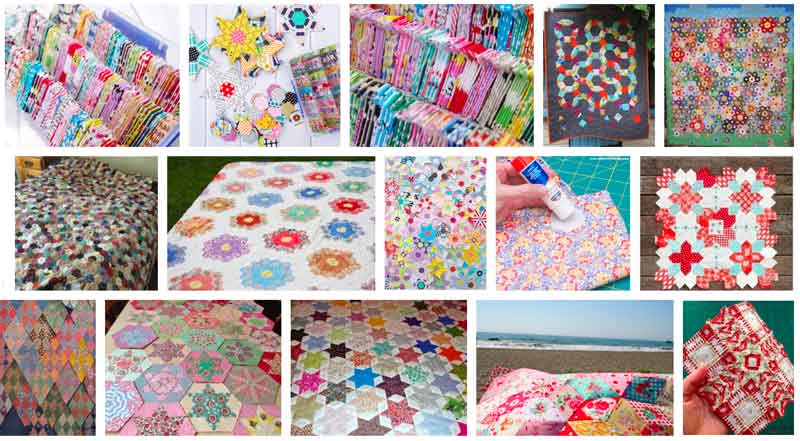
hexi: /hek see/
See also, hexie.
noun. a six-sided unit that is one of the hottest trends in quilting today
verb. "to hexie"... to make the six-sided units that are one of the hottest trends in quilting today
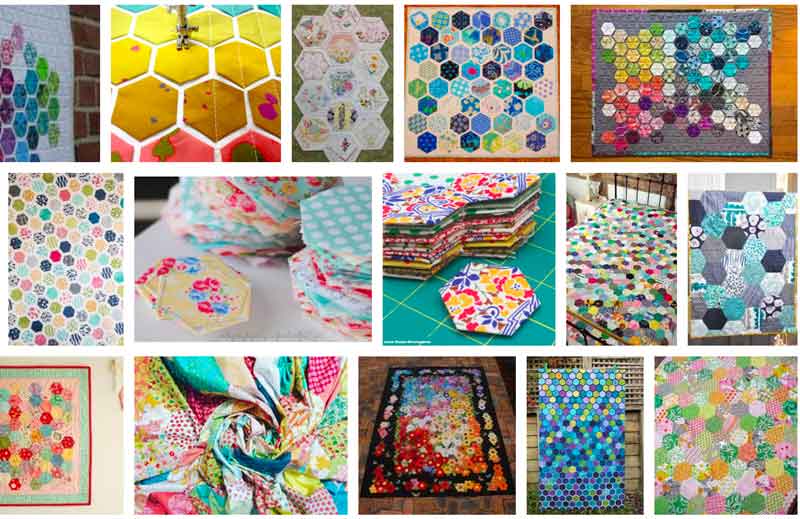
Google really likes hexies. So does Pinterest. So does Instagram - #hexies and #hexiequilt.
If you're already making hexies, please jump in with suggestions! And if you're new to hexies and English Paper Piecing, here are a few of our favorite books to start with:
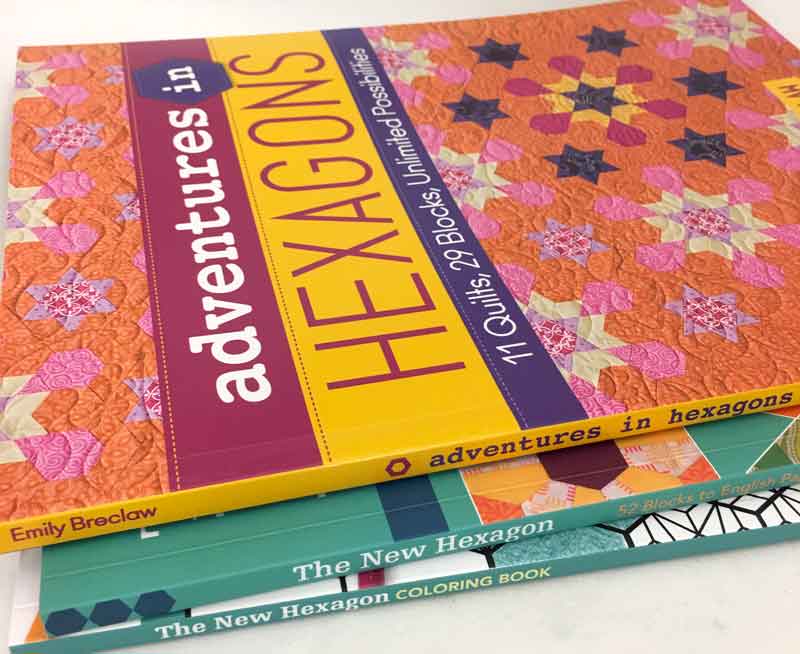
Adventures in Hexagons by Emily Breclaw for C&T Publishing. The New Hexagon and the New Hexagon Coloring Book, both by Katya Marek for Martingale. The first two are terrific resources for learning English Paper Piecing - EPP. The coloring book serves two purposes - it lets you plan your hexie creations, and it's just plan therapeutic fun. Another excellent book is All Points Patchwork by Diane Gilleland - published in 2015 by Storey Publishing.
One of the most popular patterns based on hexagons is Lucy Carson Kingwell's Smitten.

Smitten can be pieced by hand or by machine. But if you're looking for a slow-stitching, portable project... we suggest hand-piecing.
If you're looking for ideas to combine for pieced hexagon blocks, we suggest Katya Marek's The New Hexagon calendar. There are 365 different hexagon blocks.

So what do you need "to hexie"?
Supplies - required and optional:
- Fabric. Okay, that's obvious. But what size pieces do you need? More on that in a moment.
- Paper hexies. You can cut these yourself or purchase pre-made paper pieces. There are dozens of sizes and shapes. For hexies, the measurement provided is the length of each side, not the measurement across the hexie.
- Thread. 40wt. or 50 wt. That's personal preference, I know dedicated, passionate hexiers who will only use one or the other. The color is neutral - something closest to the range of your fabrics. If the fabrics are mostly lights and pastels, go with white. If they're mostly very dark, a dark tan or gray will work nicely.
- Needles. Also personal preference. I stitch everything - e.v.e.r.y.t.h.i.n.g. - with No. 9 Straw needles. I like the length of the needle and how thin it is. Most of the experts suggest a No. 9 or No. 10 needle. While straw - also known as Milliners - needles are generally recommended, use what feels comfortable to you. Don't let anyone tell you that you must use one kind-size of needle or another! That said, I would probably recommend something other than a No. 22 Chenille or No. 3 Dollmaking Needle.
- Scissors. Unless you're into breaking thread with your teeth, a small pair of scissors for cutting threads is a good idea. If you like trimming the excess fabric before or after making the hexie, a small pair of scissors that cuts fabric is a good idea.
- Thimble - optional. If you're hand-stitching the seam allowance to make the hexies and you like using a thimble, add one to your portable hexie kit.
- Clips - optional. These can be used to hold down the seam allowance while basting the hexie, or for holding two hexies together while they're being joined.
- Hole-punch - optional. For punching a hole in the middle of the hexie to make removal of the paper a little easier later on.
- Glue Pen or Stick - optional. Many of the stitchers in the office love glue-basting the seam allowance to the back of the hexie and using clips to hold them in place while the glue sets.
Fabric. I think you've already figured out that the size of your fabric piece is determined by the size of the hexie.

If you've got a stash of 2.5" mini-charm squares - Moda Candy - then 1" hexagons are the perfect size. They also work beautifully with leftover pieces of Jelly Roll strips. (We have some of those right now.) The 1" hexie papers fit easily within the 2.5" width and still have a nice seam allowance for regular or glue-basting.
Do you have a Moda Scrap Bag?
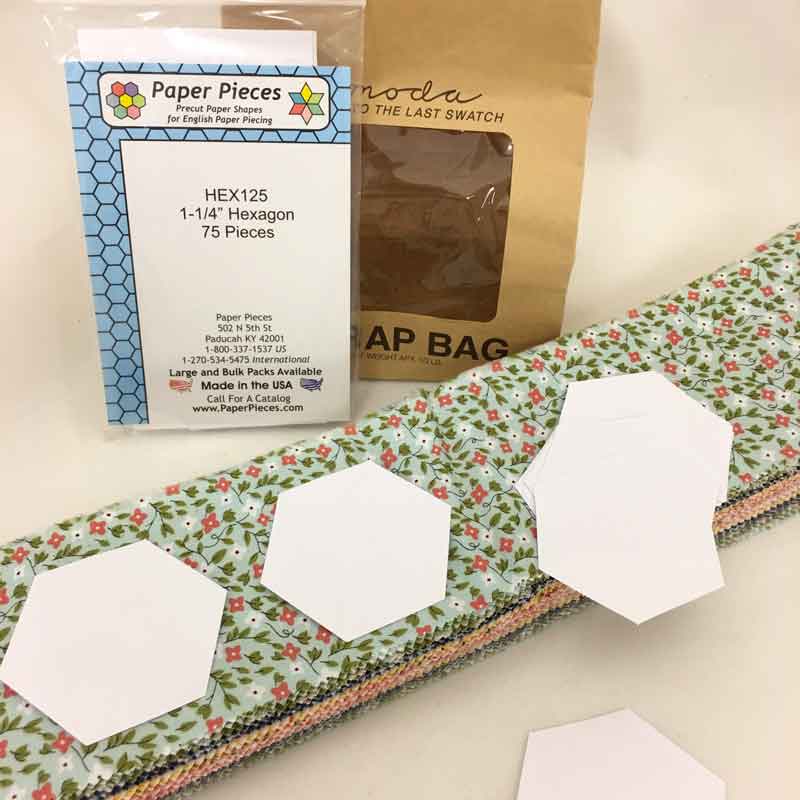
The 1-1/4" hexies will fit most of the strips in Moda Scrap Bags. (Because they can vary in width, double-check the width of the strip if you're buying Scrap Bags for a larger hexie.)
If you'd like to cut your own pieces - the simplest way to figure out what size is to measure across the hexie from flat-side to flat-side and add at least 1/2" for seam allowance.
Fussy-cutting? For today, let it suffice to say that fussy-cutting is best done at home with templates, a rotary cutter and mat. Once they're cut, they're portable!
Now that we've got the parts for your on-the-go kit, what should you put it in? That's up to you, and yes, everybody has their preferences. I prefer something small like the medium-size tin - with window - shown in the first picture. It's just big enough for a stack of charm squares, papers, scissors, thread, glue pen and binding clips. And it fits in my bag.
If you're working with bigger hexies and fabric squares, and like something a bit larger, the smallest suitcase in the sets of three work nicely.
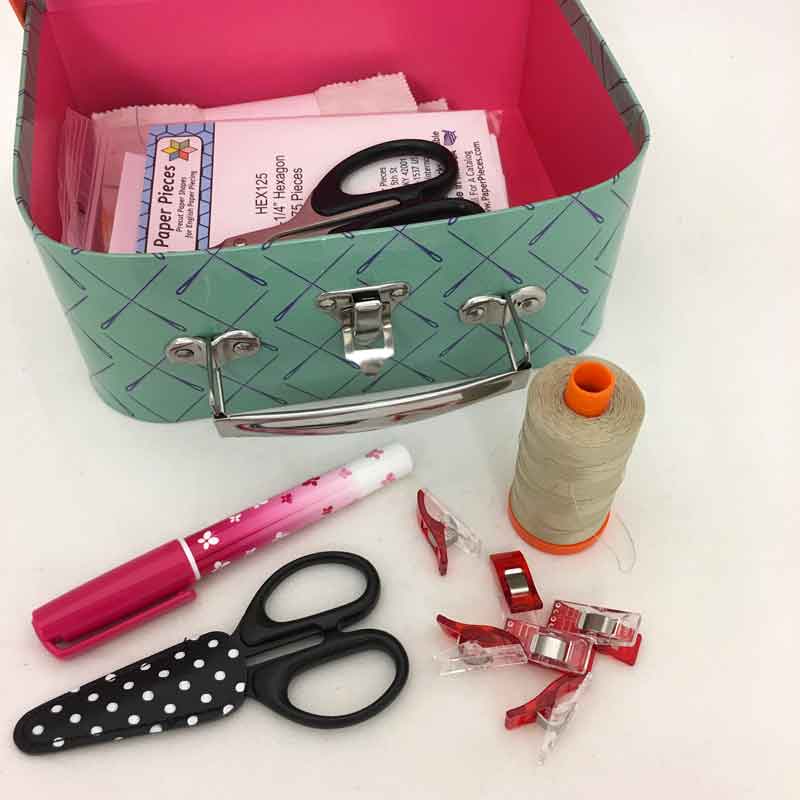 19
19
There are also zipper bags - Moda's stitch by stitch/piece by piece bags or one made by you. (Or in this case, by me.)

One word of advice... with a fabric bag like these, use a scissor-keep for the pointy-ends of the scissors. Especially if you're going to put the zipper bag in a bigger bag and have a tendency to blindly reach into the bigger bag to find something. Ouch.
So do you hexie? Do you have a hexie kit ready to take with you? What's in your kit?
I know. So many questions. But as always, I want to know what's in your bag!
Just in case you still need a little convincing... from Google.
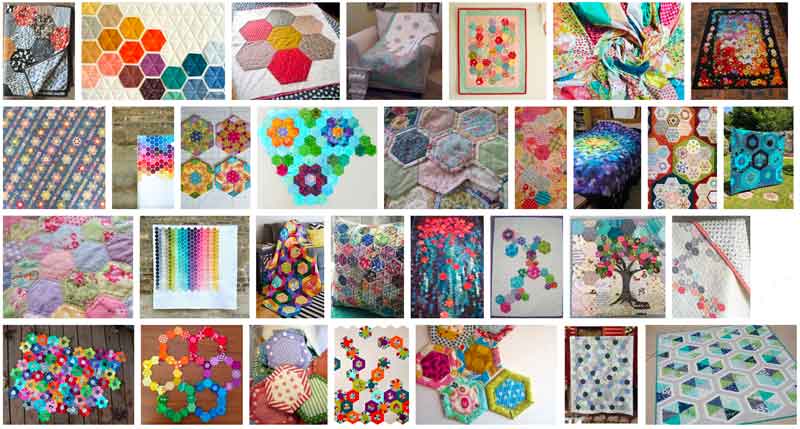
Happy Tuesday!

Comments